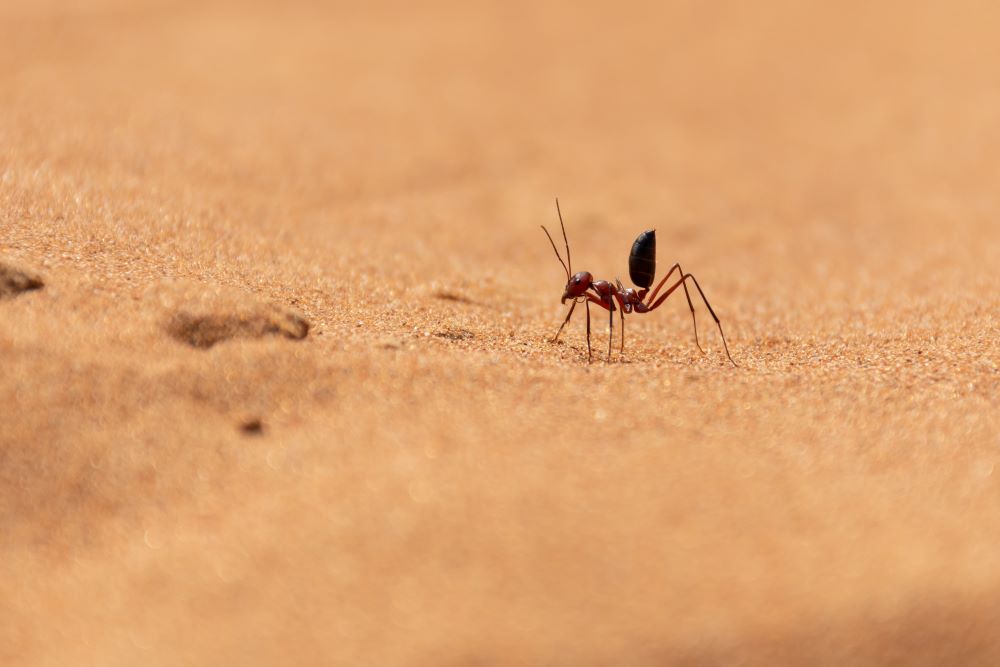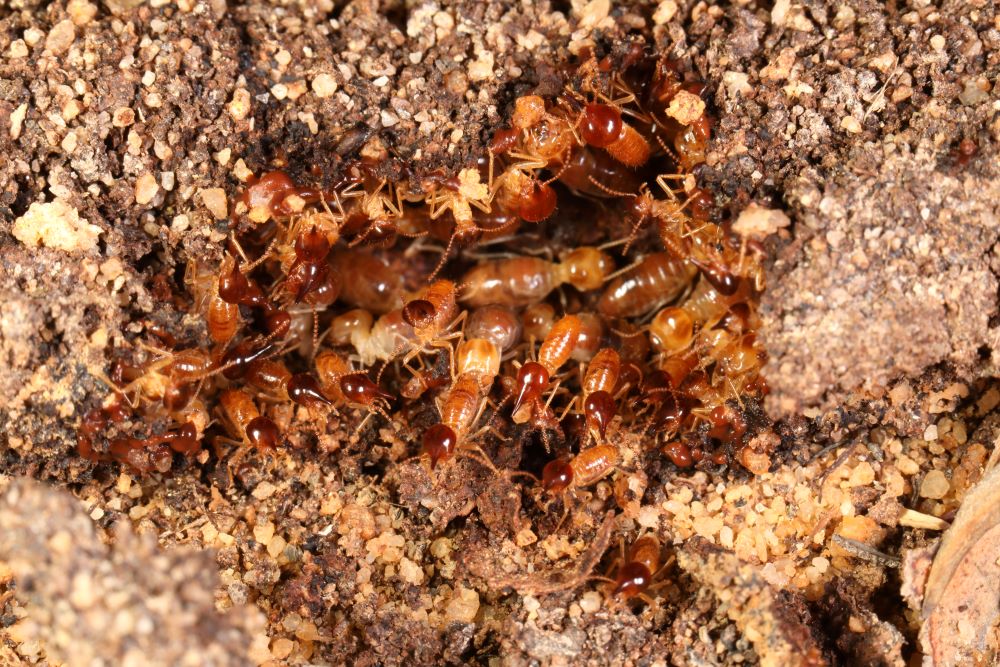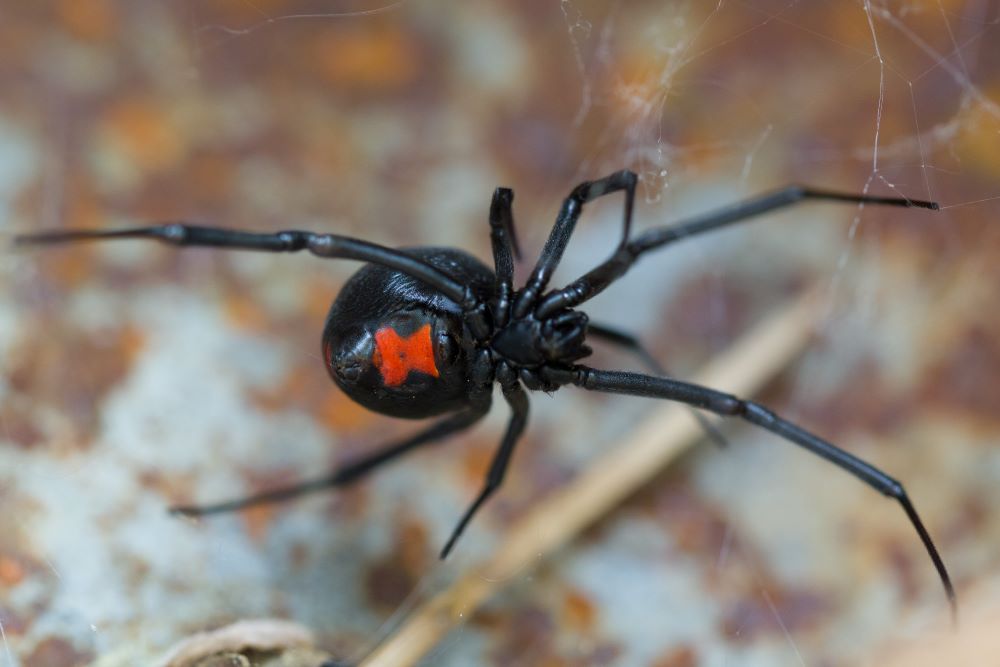 In Arizona, encountering bugs like spiders, scorpions, and bed bugs can be more common than you’d think. This comprehensive guide will illuminate what to expect, from the venomous to the merely bothersome, ensuring your home stays protected.
In Arizona, encountering bugs like spiders, scorpions, and bed bugs can be more common than you’d think. This comprehensive guide will illuminate what to expect, from the venomous to the merely bothersome, ensuring your home stays protected.
Got bugs bugging you? Don’t worry, Green Magic Pest Control is here to help. Contact us today for a free consultation.
Ants
In the bustling ecosystem of Arizona, ants claim their spot as the most common pests, leading the charge in the battle for professional pest management. These industrious insects organize into colonies that are marvels of natural engineering, comprising workers, soldiers, queens, and winged reproductives. Each caste plays a pivotal role:
- Workers: Busy bees of the ant world, they forage for food, care for the queen, and build the nest.
- Soldiers: The colony’s defense force, protecting their home from threats.
- Winged Reproductives: These are the future queens and kings, venturing out to mate and establish new colonies.
- Queen: The heart of the colony, laying hundreds to thousands of eggs to ensure the colony’s future.
Arizona is home to a diverse array of ant species, each with unique behaviors and habitats. Among these, Harvester Ants, Odorous House Ants, Argentine Ants, Pavement Ants, Fire Ants, and Carpenter Ants are notable. For instance, Harvester Ants are known for their seed collection and distinctive ‘beard’ of long hairs, while Odorous House Ants release a rotten-coconut scent when crushed. Argentine Ants, an invasive species, are recognized for their wide, resilient trails. The variety of ants in Arizona underscores the importance of tailored pest management strategies to address the specific challenges they present.
Preventing ant infestations involves a combination of moisture control, food source management, and physical barriers:
- Repair leaks and use dehumidifiers to reduce moisture.
- Cover trash cans, remove uneaten pet food, and clean up food residues.
- Regular vacuuming and surface cleaning.
- Seal cracks and crevices in walls and foundations.
- Keep yards clear of debris and excess wood.
By understanding the complex social structure of ants and the specific species prevalent in Arizona, homeowners can better prepare to protect their homes from these persistent pests.
Scorpions
Scorpions in Arizona are as diverse as they are intriguing, with species ranging from the mildly venomous to those requiring immediate medical attention. Understanding these creatures is key to coexisting with them, especially in areas where they are prevalent.
- Arizona Bark Scorpion (Centruroides sculpturatus): The most venomous and medically significant scorpion in North America. It’s easily identified by its pale tan or yellow body, slender appendages, and preference for climbing. Stings from this scorpion can cause severe pain, nausea, and neurotoxic effects, necessitating prompt medical treatment.
- Arizona Giant Hairy Scorpion (Hadrurus arizonensis) & Arizona Stripe-tailed Scorpion (Paravaejovis spinigerus): These scorpions are less of a threat to humans. The Giant Hairy Scorpion, the largest in the U.S., has a mild venom comparable to a bee sting, while the Stripe-tailed Scorpion, commonly found under rocks and in homes, also has relatively mild venom.
- Habitats and Behavior: Scorpions in Arizona are nocturnal, often found in deserts, forests, and urban areas, hiding during the day and emerging at night to feed on insects and small animals. They can be difficult to spot due to their pale colors and small size. Most scorpions prefer low desert regions, with the Arizona Bark Scorpion also found in homes, attracted to damp areas in search of water.
Professional pest control services are recommended for managing scorpion populations, ensuring safety and peace of mind for Arizona residents.
Palo Verde Beetles
Among the diverse array of bugs in Arizona, the Palo Verde beetle stands out for its unique characteristics and lifecycle. Known scientifically as Derobrachus hovorei, these beetles are not just another bug but an intriguing part of the local ecosystem.
- Description and Diet:
- Size: Ranging from 2-4 inches in length, making them one of the larger beetle species native to Arizona.
- Appearance: Boasting a brown to black coloration, long antennae, and spines on their thorax, these beetles are easily identifiable.
- Diet: Adult beetles feed on nectar and fruit, while the larvae, or grubs, consume the woody tissue of tree roots.
- Lifecycle and Habitat:
- Lifecycle: After laying eggs in the soil near tree roots, larvae hatch 2-3 years later. These grubs can live in the roots for 3-4 years before emerging as adults, which survive for about one month.
- Habitat: Commonly found in Phoenix and Tucson, these beetles have adapted to both native and non-native trees, including rose, olive, and Mexican Palo Verde trees.
- Prevention Tips:
- To prevent infestations, consider removing Palo Verde trees from your property before June, keep your landscaping tidy, limit exterior lights, and frequently prune fruit trees or sweet-smelling flowers. These steps can help deter the beetles, especially during their active months in Arizona’s monsoon season from June 15th to September 30th.
Understanding these aspects of the Palo Verde beetle can help residents coexist with these fascinating creatures while taking steps to protect their homes and local flora.
Spiders
In the diverse ecosystem of Arizona, spiders play a crucial role, and understanding the variety and habits of these arachnids can significantly enhance your preparedness. Arizona boasts an impressive roster of 26 unique spider species, making it a fascinating study for both enthusiasts and residents concerned about spider encounters. Here’s a closer look at some notable species:
- Common House Spider (Parasteatoda tepidariorum): Recognizable by its yellow or brown body with banded legs, it prefers eaves and window frames. Although not dangerous, its presence can be unsettling.
- Wolf Spider (Hogna carolinensis): This ground hunter, covered in gray hairs, is known for its non-serious bite. It resides under boards and stones.
- Brown Recluse Spider (Loxosceles reclusa): With a violin-shaped marking, it’s infamous for bites that can cause skin necrosis. Prefers undisturbed areas like closets and attics.
- Western Black Widow (Latrodectus hesperus): Identified by the red hourglass on its abdomen, its venomous bite demands caution and can lead to significant discomfort.
Preventing spider entry involves sealing homes, regular cleaning, managing vegetation, and employing DIY peppermint spray solutions. For existing invasions, professional extermination is recommended, ensuring a safe and spider-free environment.
Conclusion
As residents or visitors of Arizona, embracing proactive measures and seeking professional assistance when necessary can significantly mitigate the risks associated with these pests. Remember, knowledge and preparedness are key to protecting your home from unwanted guests. Should the need arise for expert consultation or intervention, Green Magic Pest Control is here to protect you from bugs in your Arizona home. Contact us today to start living creepy-crawly-free.

 Silverfish are more than just a problem for banks with lots of cash in the vault. These paper-eating pests might not have wings, but they sure are bookworms and fashionistas. They love reading and fashion so much, they’ll eat your books and clothes. Uh oh, sounds like these guys might be a problem.
Silverfish are more than just a problem for banks with lots of cash in the vault. These paper-eating pests might not have wings, but they sure are bookworms and fashionistas. They love reading and fashion so much, they’ll eat your books and clothes. Uh oh, sounds like these guys might be a problem.  Have you ever wondered how far do mice travel from their nest when scurrying around your home? It’s a critical question to ask, especially if you’re spotting mouse poop or signs of mouse nests in unexpected places. Understanding the distances these tiny pests can cover is key in addressing infestations effectively and safeguarding your living spaces from unwanted guests.
Have you ever wondered how far do mice travel from their nest when scurrying around your home? It’s a critical question to ask, especially if you’re spotting mouse poop or signs of mouse nests in unexpected places. Understanding the distances these tiny pests can cover is key in addressing infestations effectively and safeguarding your living spaces from unwanted guests. Ticks are nasty, blood sucking bugs that can cause serious health problems to humans and animals alike. Treat these pests like more than just a bother, since diseases like lyme disease aren’t a laughing matter. In this article, we’ll learn all about ticks in Arizona, how they behave, what dangers they pose to us, and what to do about them.
Ticks are nasty, blood sucking bugs that can cause serious health problems to humans and animals alike. Treat these pests like more than just a bother, since diseases like lyme disease aren’t a laughing matter. In this article, we’ll learn all about ticks in Arizona, how they behave, what dangers they pose to us, and what to do about them. 

 German cockroaches can be a persistent and unsightly problem in your home. Not only do they carry diseases and cause allergies, but they can also multiply very rapidly if not dealt with properly. In this guide, we will look at the best ways to kill German cockroaches effectively and prevent future infestations. Whether you prefer DIY methods or professional assistance, Green Magic Pest Control has you covered.
German cockroaches can be a persistent and unsightly problem in your home. Not only do they carry diseases and cause allergies, but they can also multiply very rapidly if not dealt with properly. In this guide, we will look at the best ways to kill German cockroaches effectively and prevent future infestations. Whether you prefer DIY methods or professional assistance, Green Magic Pest Control has you covered. 
 When you think of bees, you might think of cute little bumble bees hovering around flower meadows. However, in Arizona, you’re not going to see much of that! The types of bees found here can often be intrusive and dangerous if you aren’t proactive about dealing with them on your property. It’s important to understand the different types of bees in Arizona you might encounter, and how to handle potential infestation problems. Let’s begin!
When you think of bees, you might think of cute little bumble bees hovering around flower meadows. However, in Arizona, you’re not going to see much of that! The types of bees found here can often be intrusive and dangerous if you aren’t proactive about dealing with them on your property. It’s important to understand the different types of bees in Arizona you might encounter, and how to handle potential infestation problems. Let’s begin!